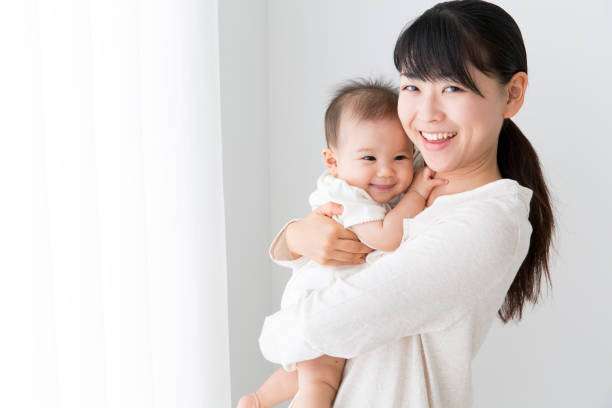
Wildlife experts are often worried that some animals will go into extinction shortly. They do everything possible to protect the few such animals left by protecting them from hunters and other animals that prey on them. In Japan, such fears are nowhere to be found because something weightier is going into extinction. That thing is Japan itself, and the government is doing everything to prevent it from going extinct.
The existence of every country depends on its birth and death rate. Most countries in the world, especially developing and underdeveloped countries, often complain of overpopulation and look for ways to tackle it. For Japan, the birth rate is declining fast, and its death rate is on the high side.
Masako Mori, an adviser of Prime Minister Fumio Kishida, believes the country might cease to exist should the birth rate remain as it is.
“If we go on like this, the country will disappear,” Masako Mori told Bloomberg in an interview. “It’s the people who have to live through the process of disappearance who will face enormous harm. It’s a terrible disease that will afflict those children.”
Although there has always been a fall in Japan’s population recently, none has become scarier than the latest statistics. The country’s population is approximately 124.6 million, a decline from a peak of 128 million in 2008. Almost 30% of the people are above 65 years.
When there are more deaths than births
Last month, the Japanese government announced that there was a sharp drop in the number of babies born last year and a further increase in the death rate. In 2022, 799,728 babies were born in Japan, while about 1.58 million Japanese died. That means that there is a loss of about 780,272 in the country’s population and a death rate that was approximately double the birth rate. If the population decline continues at that rate until 2065, there would be only 88 million people in Japan by 2065, an alarming 30% decline in just 45 years.
To maintain a stable population in a country, the expected fertility rate is 2.1. As of 2022, the fertility rate in Japan is somewhat around 1.3, and with the absence of immigration, the country might be left without people in the decades ahead.
An elderly population speaks volumes
With about 30% of Japanese above 65 years, the country is gradually progressing into an aged population. Hence the shocking increment in Japan’s death rate. Secondly, Japan has one of the highest life expectancies in the world. In 2020, one in every 1,500 Japanese was over 100 years. While the people of Japan are grateful that its people do not die early, they are now more concerned about the absence of young people that would replace the dying population.
Additionally, an aged population mean there would be an insufficient workforce in the country and that the government would spend most of its earnings caring for the aged through pensions and health care. However, what is more important, is that most of these aged people are not leaving their replacements behind.
An issue of significant concern to the government
The government in Japan is not unaware of the population challenges facing the country. Hence, the government is planning a reorientation of the young people in the country by prioritising raising families.
In January, Prime Minister Fumio Kishida said the country cannot wait any longer if it wants to resolve the population crisis once and for all time.
“In thinking of the sustainability and inclusiveness of our nation’s economy and society, we place child-rearing support as our most important policy,” Kishida said. “It is now or never when it comes to policies regarding births and child-rearing – it is an issue that simply cannot wait any longer.”
He vowed to double the budget for Child-related policies by June and that a new government agency that would implement these new policies would be set up in April of this year. Under the new policies, the Japanese government would encourage couples to start families while providing incentives for them by increasing childcare allowances and after-school care initiatives. He referred to it as a “child-first social economy.”
Despite the government’s doubling effort, Masako Mori believes it is very difficult to reverse the situation because there are insufficient women of childbearing age in Japan. He, however, insisted it must do its best to save the almost incurable situation.
Why women in Japan are reluctant to give birth
The low fertility rate in Japan is not natural. It is deliberate, as women are not interested in giving birth like it is in most parts of the world. Why could that be?
Gender roles amid plenty of job opportunities
In Japan, the burden of domestic work falls on women. They have the responsibility to care for their homes and their children if they have any. The men, on the other hand, contribute very little to housework and childcare. Hence, it has become very difficult for married women to balance domestic and secular work.
“Japan is not a place where just anyone can have one or more children,” Yuka Minagawa, an associate professor at Sophia University in Tokyo, told The Guardian. “Women continue to take on the lion’s share of household chores, even if they also work outside the home.”
Japan, being the third largest economy in the world, has many economic opportunities for women and men. In 2020, the employment rate for women was 87%, one of the highest in the world. Hence most women in Japan prefer to pursue their careers rather than get married and remain stuck with domestic work.
“With higher education, more young women have similar wages to men, so their average search period for spouses is longer. Currently, the average age of first marriage for women is 29 years, well beyond the 25 years in the 1980s – when most women were only high school graduates,” Naohiro Yashiro, a professor at Showa Women’s University, wrote.
Most young women are uninterested in getting married and the government would have to start implementing its new policy by encouraging young women to get married.
The cost of raising a child
Raising a child in Japan cost more than in most countries. The cost of raising one child is between 29 million yen and 60 million yen. Since women do not have sufficient time, they might need to pay for a caregiver for their babies, thereby increasing the cost of childbearing. Hence most women would prefer staying single and not giving birth.
The women speak
Most young women in Japan think alike. After a University education, the next thing is to find a good job and get the best out of life.
A 23-year-old, who recently graduated from Tokyo’s Temple University, told Aljazeera that getting married and giving birth was not in her books, at least for now.
“It is definitely not my first choice,” Hashimoto said. “Fulfilling my career and enjoying my freedom is far more important than getting married and having children.”
She said her reason for the decision was because of the cost of raising a child in the country.
“Raising a child really costs a lot of money,” she said. “It’s not easy for Japanese women to balance having a career and raising a family because we will have to choose between them.”
Nao Iwai, a University student in Tokyo, told the Guardian that she has changed her mind about having children after seeing her eldest sister struggle with raising a child.
“I used to think I would be married by 25 and a mother by 27. But when I look at my eldest sister, who has a two-year-old girl, I’m afraid to have children.”
“When you have a child in Japan, the husband keeps working but the mother is expected to quit her job and look after the children,” Iwai continued. “I just feel that it’s hard to raise children, financially, mentally and physically,” adding that she does not trust the government’s promises to provide support for families and young children.
What the expert says
Although most experts have different solutions to the population crisis in Japan, they have identified one problem. The working system in the country. With 76% of mothers in Japan’s workforce, many believe that the employment system is a major discouraging factor. Yuko Kawanishi, a sociology professor at Tokyo’s Lakeland University, told Aljazeera that only 30% of mothers are permanently employed, while the remaining working mothers are contract workers (hiseiki).
“This is a very serious macroeconomic issue because many young women are worried about falling into [non-permanent employment],” Ms Kawanishi said. “There is a serious disparity in this country, between seiki and hiseiki work, in terms of stability and benefits and salary … there is real uncertainty about the future.”
She insisted that with proper planning, Japan could be able to solve its demographic crisis.
“There are things we can do, but we have yet to find any effective ways. I don’t think the policy Japan has been advocating for the past few weeks is drastic enough to make an impact,” insisting that money alone cannot solve the problem.
Many experts have argued that unless the work habit is changed in Japan, citizens would be uninterested in giving birth and the population would continue to decline until a permanent solution is found. Already, there are insufficient women of childbearing age and unless the problem is tackled soon, there might be no women to give birth in the decades ahead.













0 Comments